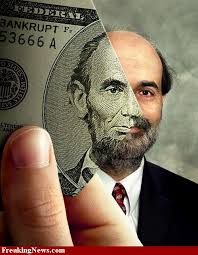Fun Facts About the U.S. Federal Reserve
-
The U.S. Federal Reserve System began on November 16th, 1914
- The Federal Reserve is a private institution. It is owned by the 12 regional Federal Reserve banks, which are each in turn owned by a combination of regional banks, commercial banks, foreign banks, and miscellaneous individuals who have inherited pieces passed down through generations. (Rockefellers, Rothschilds, etc.)
- The Federal Reserve holds a monopoly on the issuance of currency in the USA. In essence, this is the power to borrow an infinite amount of money at 0%. The dollar bill in your pocket is a 0% loan to the Federal Reserve. The Federal Reserve then uses these 0% loans to purchase income-producing assets. Before 2008, the assets purchased were primarily Treasury debt, which is backed by the taxation power of the US Government. In other words, we are exchanging the property rights to our valuable assets (land, labor, entrepreneurship) for little slips of green paper to buy trinkets with. The government can then tax these valuable assets to pay for our excess. The more we spend, the more the Fed owns.
 If all money created is debt and counts as principal, where does the money come from to pay interest on this debt? It comes from the money that gets printed in the future. This is why inflation is a natural result of our current monetary system.
If all money created is debt and counts as principal, where does the money come from to pay interest on this debt? It comes from the money that gets printed in the future. This is why inflation is a natural result of our current monetary system.
- Prior the the Emergency Economic Stabilization Act/TARP Act of September 2008, commercial banks were required to hold 10% of deposits as reserves. This placed a limit on the potential amount of money creation at around 9x the original deposit. An obscure clause in the TARP Act changed the reserve requirement to 0%, immediately making the potential money supply infinite.
- The reason for the credit spread blowups of October/November 2008 was because in the same TARP Act the Fed was allowed to pay interest on deposits without publicly stating the interest rate. Before the TARP Act, there was around $20 billion deposited by commercial banks at the Fed. After the TARP Act, deposits immediately jumped 50x to $1 TRILLION. This resulted in a disappearance of demand for risky assets, which led to blowouts in credit spreads.
 As a result of various acts of Congress in 2008, the Federal Reserve now has the authority to buy all sorts of assets (commercial paper, corporate bonds, mortgage loans, etc.). A cynical person would say this essentially allows the Fed to seize all valuable assets in this country directly by exchanging fancy bits of green paper for them without having to go through the intermediate step of coercing the US Government into spending more money and taking on more debt.
As a result of various acts of Congress in 2008, the Federal Reserve now has the authority to buy all sorts of assets (commercial paper, corporate bonds, mortgage loans, etc.). A cynical person would say this essentially allows the Fed to seize all valuable assets in this country directly by exchanging fancy bits of green paper for them without having to go through the intermediate step of coercing the US Government into spending more money and taking on more debt.
- Much of the Fed’s activity is not made public because of the use of off-balance sheet vehicles.
- There is debate over the constitutionality of the Fed’s various awesome powers.
What does this all mean? This economic crisis will not become a depression. By employing the new tools of monetary policy that the Fed has created for itself (interest on reserves and direct asset purchases), the money supply can be jerked around as if on a string. Initially, this means we will soon experience another period of easy credit and unsustainable economic growth.
However, the end result of current policies is that the Fed will be powerless to stop the next economic crisis. Assuming no outside shocks (another big war, nuclear attack, etc.), the dollar will over time lose its status as the reserve currency, and we will experience a currency crisis followed by rampant inflation at some point down the road.
Special thanks to www.seekingalpha.com





 The Mind of Adam J. Kovitz
The Mind of Adam J. Kovitz